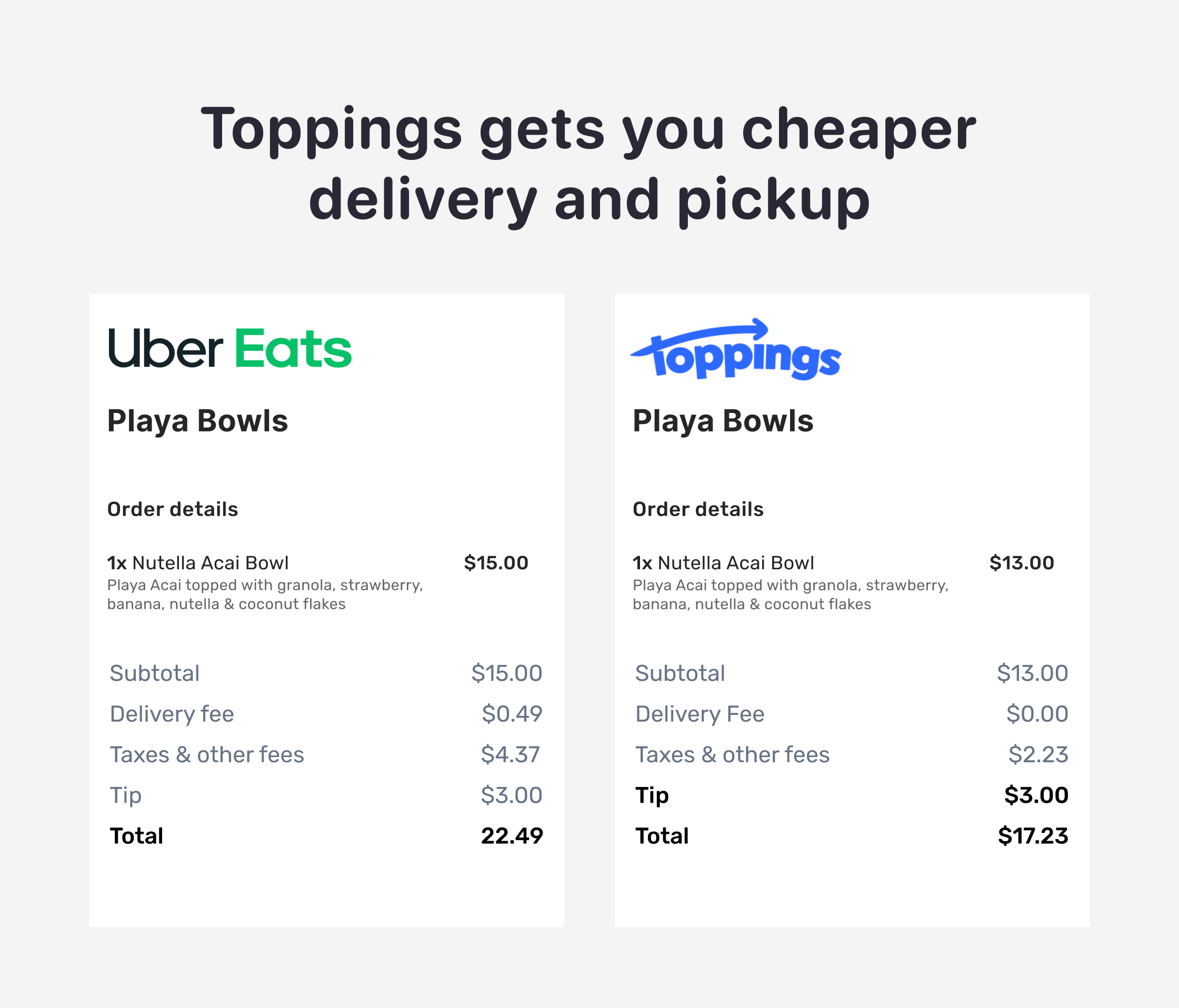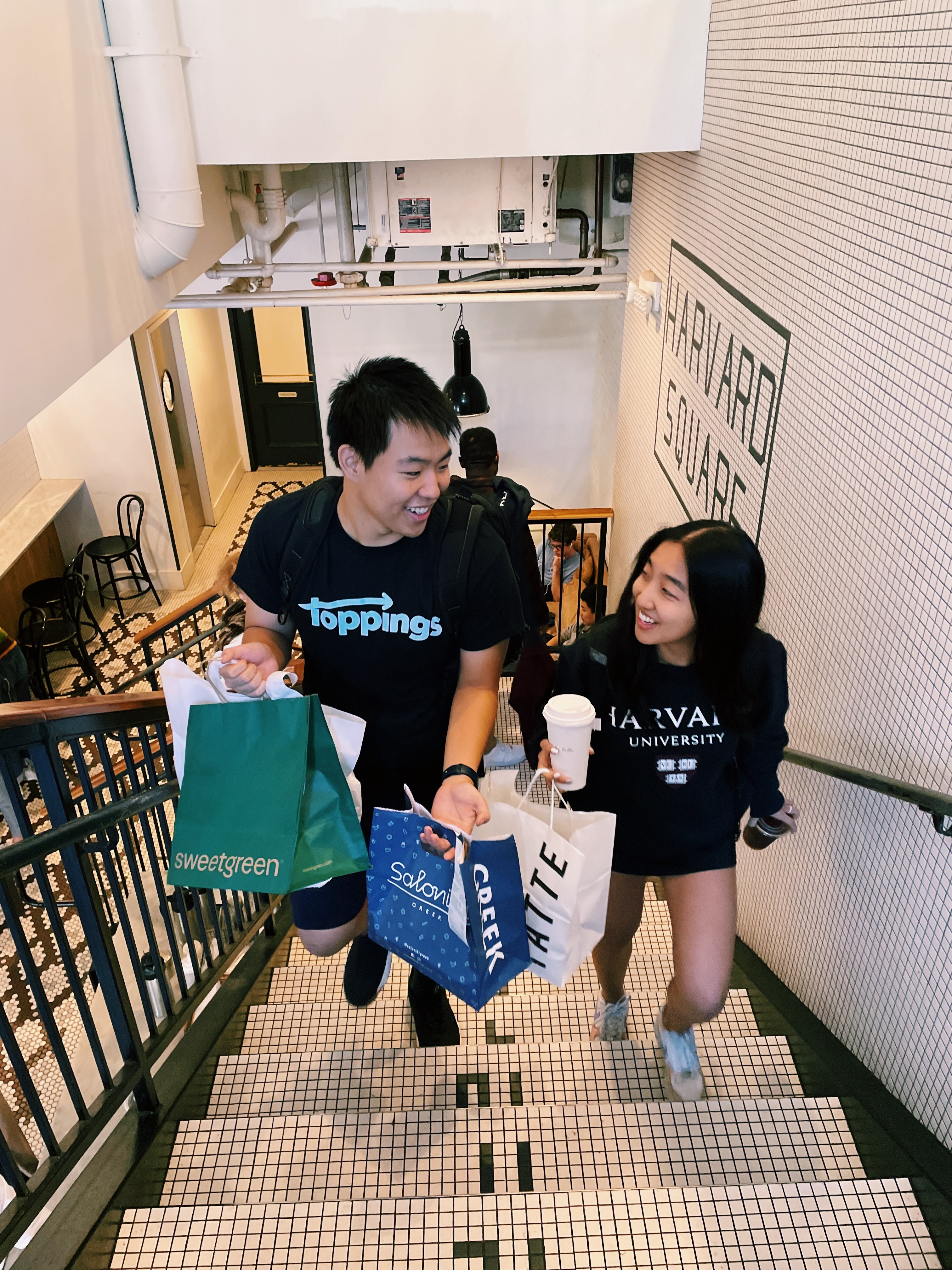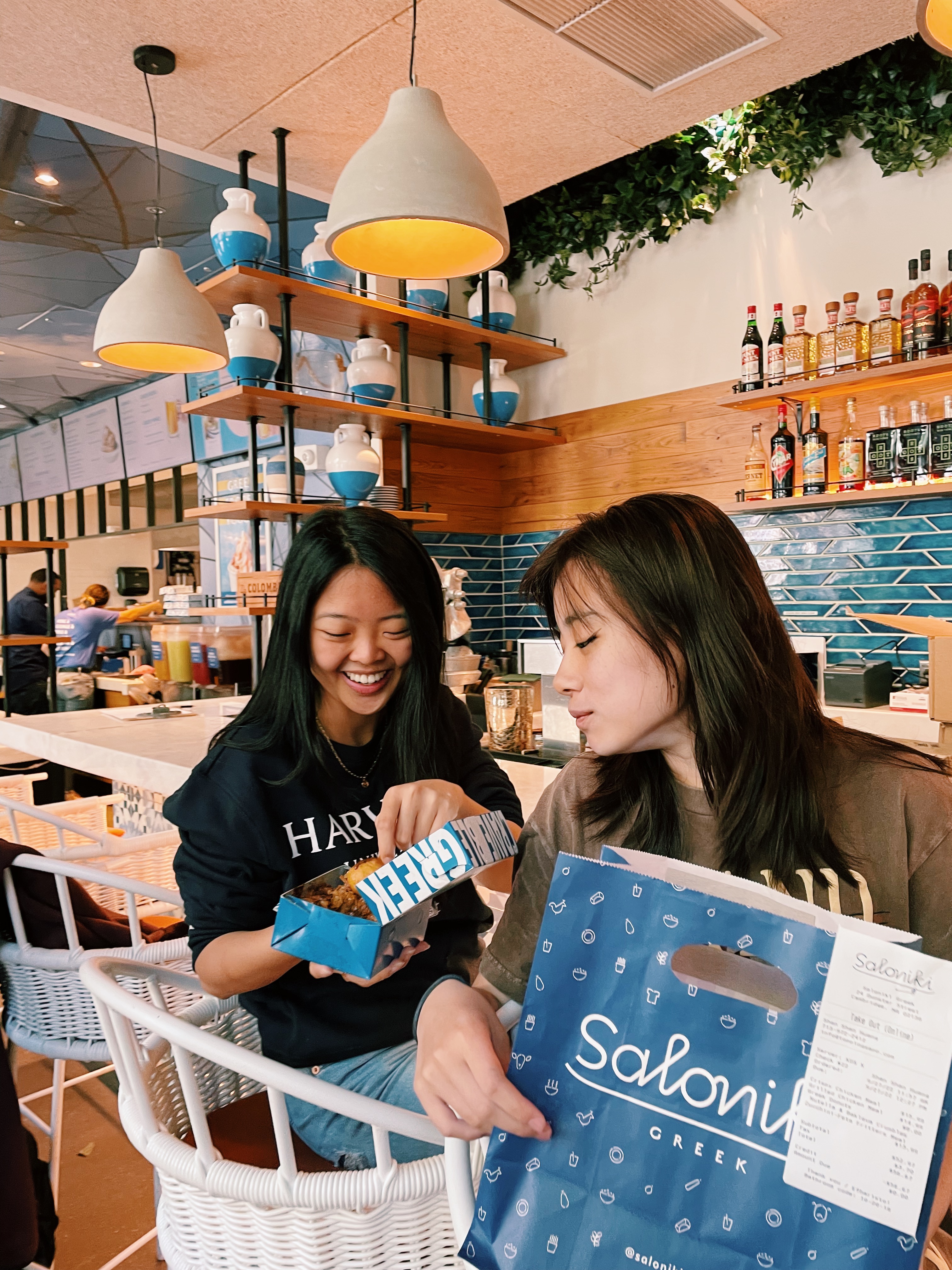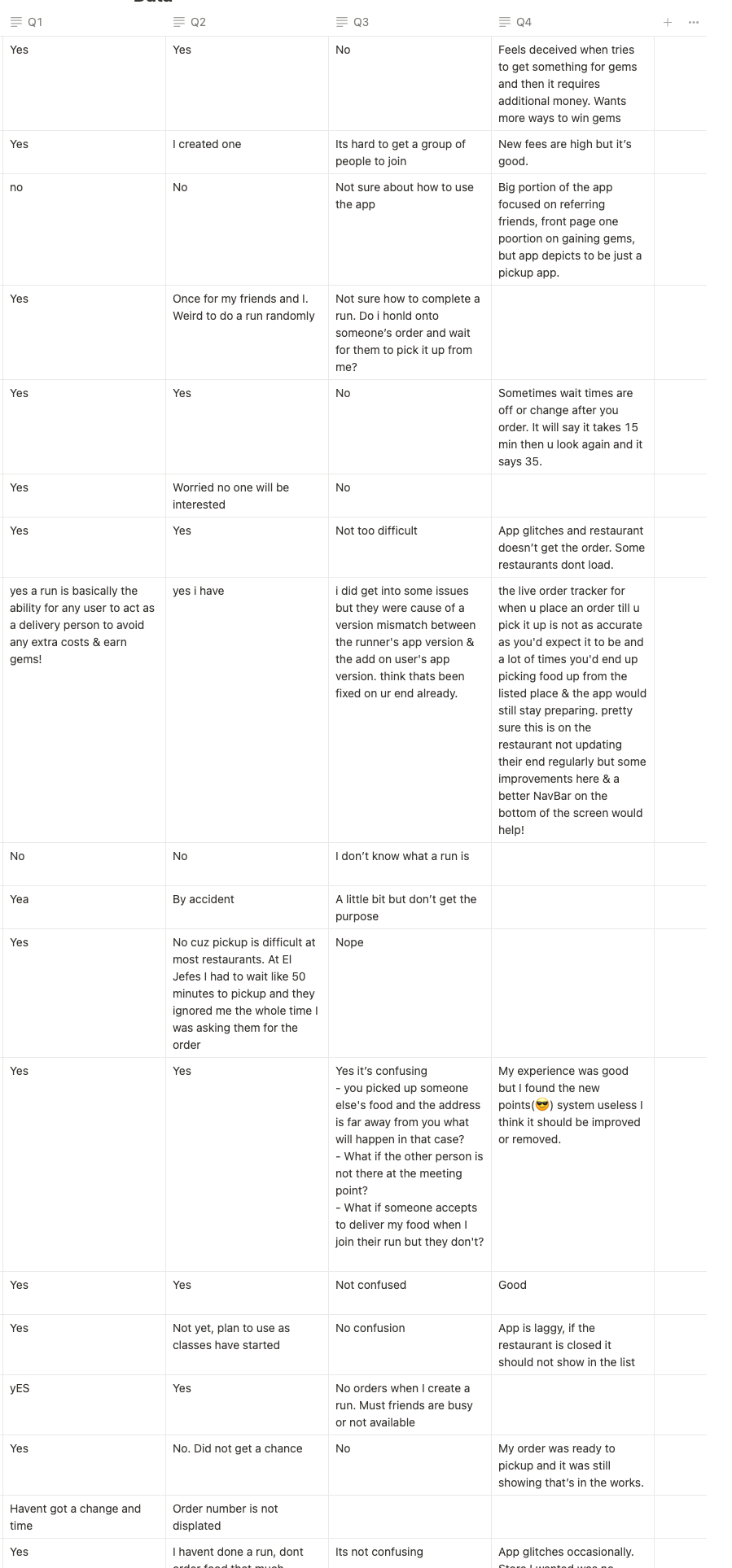Toppings
June 2023

I joined Toppings to discover new, sustainable business models for the restaurant industry. We're creating a viral product that brings new clients to restaurants at prices lower than Doordash or Uber Eats
What is Toppings?
In 2023 I joined Toppings, a food delivery app targeting college students in the Boston area. Mainly in Boston University, Northeastern, Tufts, Harvard & MIT. Our mission was to disrupt the existing food delivery model by creating a system that would save students money while charging restaurants lower fees compared to services like UberEats or DoorDash.
Toppings was born out a pressing need in the restraurant industry. With the rapid evolution of restaurant technology and the rise of delivery giants, restaurants have seen their profit margins shrink dramatically. They now find themselves splitting revenue between food delivery companies, payment providers, and various other services just to stay afloat in an increasingly competitive landscape. Toppings aimed to bridge this gap, offering a solution that balanced high-quality service for consumers with improved economic benefits for restaurants.

As the lead product designer I was responsible for:
- defining product strategy
- creating design specs
- collaborating with the engineering team to ensure high shipping quality
- Running user research and interviews to discover problems, needs and opportunities.
- Iterate on product features based on user feedback
The Toppings concept
Toppings introduced a novel "food carpooling concept":
- Students pick up food for others while already visting a restaurant and they bring it to them.
- Deliverers earn free food as a reward
- Restaurants pay lower fees compared to other services
- Customers enjoy lower prices (no delivery or service fees) and a social ordering experience.









Rapid user growth
On our first iterations of the app we achieved 30,000 users within weeks. Creating viral demand that resulted in long lines at popular Harvard Square Restaurants. This traction helped us secure funding from prominent investors, validating our innovative approach.

Onboarding
One of our biggest challenges was explaining to people what the product did. We were training them on a new behavior so it was really important they understood how to use the product.
I spent a lot of time trying to understand and design the right incentive mechanisms to nudge people towards picking up food for others in exchange for free food. This required me to run frequent user interviews, both in-site and via SMS and email to better understand how people were using the product. This was vital to define our product positioning and to fine tune the product so that it achieved the virality it ended up having.
The main solutions for the onboarding required constant iteration with customers. Often running user interviews in tandem with product design to discover the best flows. We iterated a lot to come up with something that would improve the time from signup to first order, which was super long (3-4 days) to 1 day max as well as to reduce the amount of churned users (60% of sign ups) due to the poor onboarding explanations. Some of the changes we did included:
- Implemented contextual explanations for delivery/pickup options
- Developed clear tutorials for core user actions
- Created visual cues to showcase potential rewards
- Designed seamless link-sharing mechanisms for social sharing















Features
Here are some more pics of the app for you to enjoy!
Home page



Invite Friends page



Brand
Through extensive user interviews, we crafted a brand identity that resonated with our Gen Z audience. Users described Toppings as funny, social, and relatable. We leveraged this feedback to create authentic and trendy content for Tikttok and Instagram, as well as partnering with local favorites like Mass Hole Donuts to enhance credibility and increase brand awareness.
Group order spec and the three sided marketplace coordination
As we scaled, we encountered challenges in coordinating our three-sided marketplace (restaurants, deliverers, customers). Through rigorous testing and analysis, we discovered:
- Users were hesitant to become runners, even with incentives
- Group orders with discounts showed more promise than individual deliveries
This insight led us to pivot towards a group ordering model, focusing on:
- Incentivizing price-sensitive, value-oriented customers
- Helping restaurants increase order volume without sacrificing margins
- Reaching underserved segments of the student population









User Research in campus
To truly understand our users, we employed multiple research methods:
- On-campus interviews with carefully crafted questions about meal habits, priorities, and psychographics
- SMS surveys with existing users, offering rewards for feedback
- Development of detailed user stories to guide product development
This approach allowed us to continuously refine our product, ensuring it met real user needs and preferences.


We'd usually reach out to customers with messages (tailored to particular goals) like this:
Hey [first name]
This is Ray, the founder of the toppings app. We're trying to get some feedback for the next update.
Will give u 1 gem/free food if u respond to some questions! Are u up for it?
Say Yes if ur down.
Do you know what a group order in Toppings is? Have you created a group order through Toppings? If not, why? What do you think would make it easier for you to do a group order? Would you be willing to deliver food to strangers in exchange of free food?
This usually resulted in responses that we then tracked in a Notion file:

And which I presented to the entire team so we could create actionable steps. In other companies, this work was also connected to ticket creation but we were moving so fast at Toppings that we'd just tell each other what needed fixing every day and we'd follow up relentlessly until it was fixed. Move fast yay!

Pivot Hell
Despite our initial traction and innovative approach, we faced significant challenges in creating a sustainable business model. After exhaustive exploration of pivots into luxury goods, mental health, and insurance verticals, we made the difficult decision to shut down the company and part ways since there was no viable business opportunity at the moment.

